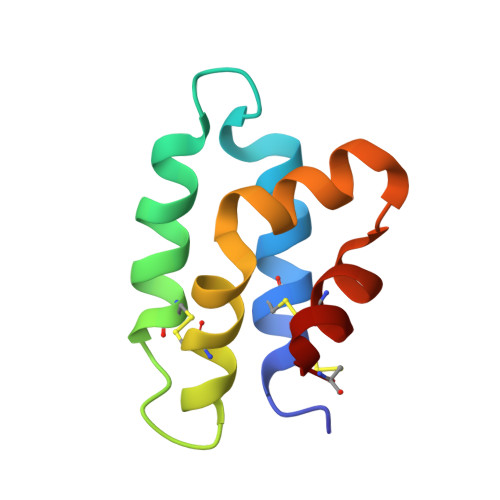Solution Structure of the Pore-Forming Protein of Entamoeba Histolytica
Hecht, O., Van Nuland, N., Schleinkofer, K., Dingley, A.J., Bruhn, H., Leippe, M., Grotzinger, J.(2004) J Biol Chem 279: 17834
- PubMed: 14970207
- DOI: https://doi.org/10.1074/jbc.M312978200
- Primary Citation of Related Structures:
1OF9 - PubMed Abstract:
Amoebapore A is a 77-residue protein from the protozoan parasite and human pathogen Entamoeba histolytica. Amoebapores lyse both bacteria and eukaryotic cells by pore formation and play a pivotal role in the destruction of host tissues during amoebiasis, one of the most life-threatening parasitic diseases. Amoebapore A belongs to the superfamily of saposin-like proteins that are characterized by a conserved disulfide bond pattern and a fold consisting of five helices. Membrane-permeabilizing effector molecules of mammalian lymphocytes such as porcine NK-lysin and the human granulysin share these structural attributes. Several mechanisms have been proposed to explain how saposin-like proteins form membrane pores. All mechanisms indicate that the surface charge distribution of these proteins is the basis of their membrane binding capacity and pore formation. Here, we have solved the structure of amoebapore A by NMR spectroscopy. We demonstrate that the specific activation step of amoebapore A depends on a pH-dependent dimerization event and is modulated by a surface-exposed histidine residue. Thus, histidine-mediated dimerization is the molecular switch for pore formation and reveals a novel activation mechanism of pore-forming toxins.
Organizational Affiliation:
Biochemisches Institut der Christian-Albrechts-Universität Kiel, Olshausenstr. 40 24118 Kiel, Germany.














